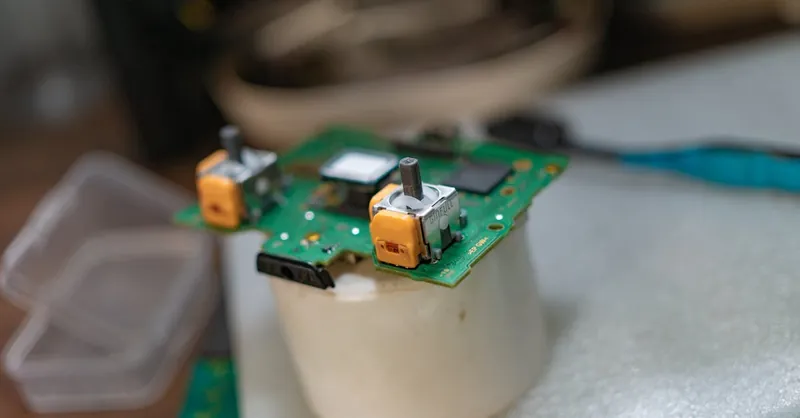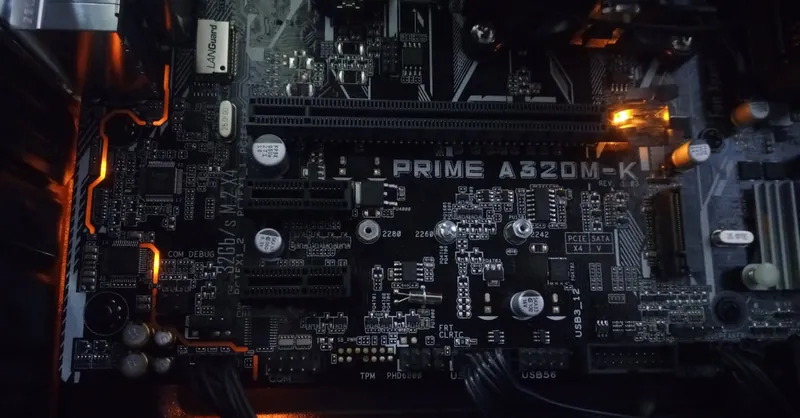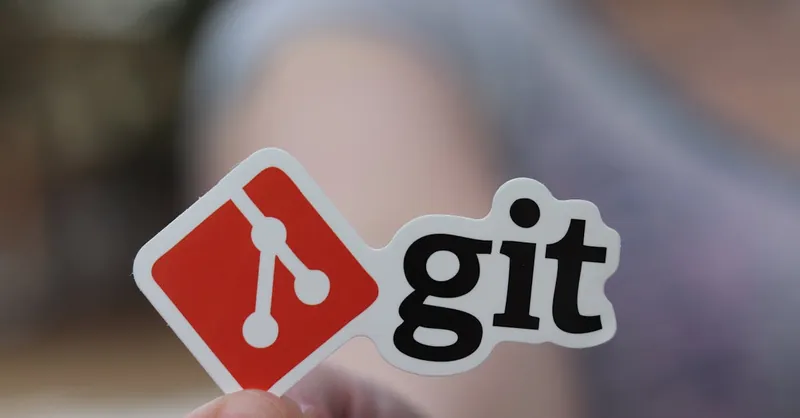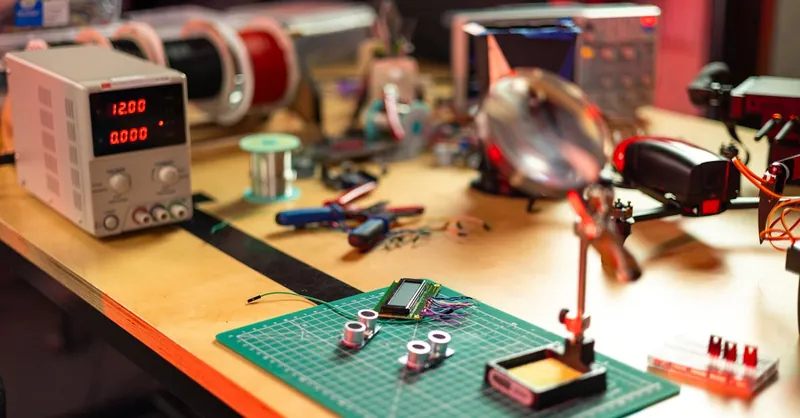Microcontroller Firmware Development Best Practices
Category: Embedded Systems
Mastering Microcontroller Firmware Development Best Practices
If you're a tech enthusiast, hobbyist, or developer working with Raspberry Pi or microcontrollers, you've likely faced challenges ensuring your firmware is reliable, efficient, and maintainable. Whether you're programming in Python, C, or C++ and stepping into embedded systems development, understanding best practices in firmware design can save you hours of debugging and improve your projects' overall performance and longevity. This post zeroes in on practical strategies, from coding standards to testing, optimized for developers like you seeking to refine your skills and build rock-solid firmware. We’ll walk you through step-by-step approaches that the top experts rely on, tailored to embedded environments and resource-constrained devices. By the end, you'll be equipped to write clean, modular, and scalable firmware — accelerating your projects and elevating your development process. Dive in to empower your microcontroller projects with firmware that’s robust, maintainable, and aligned with industry best practices.
- Mastering Microcontroller Firmware Development Best Practices
- Understanding Microcontroller Architecture and Constraints
- Coding Standards and Style Guidelines
- Modular Firmware Design and Code Organization
- Efficient Use of Resources and Power Management
- Error Handling and Robustness Strategies
- Version Control and Documentation: Essential Tools for Collaborative Firmware Development
- Testing, Debugging, and Validation: Catching Bugs Early for Reliable Firmware
- Security Best Practices in Firmware Development: Safeguarding Firmware from Common Vulnerabilities and Ensuring Data Integrity in Connected Devices
- Firmware Update and Maintenance Strategies: Remote Updates, Rollbacks, and Long-Term Support
- Toolchains and Development Environment Setup: Streamlining Firmware Development with the Right Tools
Understanding Microcontroller Architecture and Constraints
Before diving into firmware development, gaining a solid grasp of the microcontroller's architecture and inherent constraints is crucial. Unlike general-purpose processors, microcontrollers are designed with specific hardware limitations and resource restrictions that directly influence the way firmware should be written and optimized.
Hardware Limitations: CPU and Memory
Most microcontrollers feature relatively low clock speeds compared to desktop CPUs, limiting how many instructions can be executed per second. This means your firmware needs to be highly efficient in terms of processing to meet real-time requirements, especially for interrupt-driven or time-sensitive applications.
Memory constraints pose another significant challenge:
- Flash Memory (Program Memory): Limited space for storing executable code means your firmware must be compact and well-structured to avoid unnecessary bloat.
- RAM: Often the scarcest resource, it must be carefully managed to prevent stack overflows, memory corruption, or unpredictable behavior.
- EEPROM/Non-volatile Memory: Used for persistent data storage, which requires mindful read/write cycles to extend device longevity.
Processor Capabilities and Instruction Set
Microcontrollers possess unique instruction sets that influence how firmware handles computations and peripheral interactions. For example, many embedded processors have limited support for floating-point operations, prompting developers to rely on fixed-point arithmetic or hardware-accelerated math when possible to optimize performance.
Understanding the processor’s peripheral interfaces (such as UART, SPI, I2C, ADCs, timers, and interrupts) also helps in writing firmware that effectively leverages hardware features without wasting CPU cycles on polling or inefficient data handling.
Key Constraints to Manage in Firmware Development
- Real-time Performance – Ensuring low-latency response for interrupts and time-bound tasks.
- Power Consumption – Writing energy-efficient code, especially critical for battery-powered microcontrollers.
- Memory Footprint Optimization – Minimizing stack, heap, and program size to fit within device limitations.
- Robust Error Handling – Gracefully dealing with hardware faults and unexpected input to maintain system stability.
By internalizing these architectural aspects and constraints, you'll be better equipped to tailor your firmware design decisions—choosing appropriate data structures, optimizing code paths, and selecting the right algorithms—to maximize reliability and efficiency in your embedded systems projects.

Image courtesy of FOX ^.ᆽ.^= ∫
Coding Standards and Style Guidelines
In microcontroller firmware development, adhering to consistent coding standards and style guidelines is fundamental for producing maintainable, readable, and error-resilient code. Whether you’re programming in C, C++, or Python for embedded systems, following established conventions not only enhances individual productivity but also vastly improves collaboration within development teams. Consistency reduces the cognitive load when reading code, minimizes misunderstandings, and accelerates debugging and future modifications—critical factors when working with complex, resource-constrained microcontroller projects.
Why Consistency Matters in Embedded C/C++ and Python
- Improved Readability: Clear and uniform code formatting makes it easier for you and others to understand logic flow, variable roles, and hardware interactions quickly.
- Simplified Code Reviews: Adhering to style guides streamlines peer reviews by focusing on logic and design issues rather than formatting disparities.
- Reduced Bug Density: Consistent naming conventions and structured error handling help prevent subtle bugs, especially in low-level embedded contexts where debugging can be time-consuming.
- Facilitated Collaboration: When multiple developers work on firmware—possibly across remote teams or open-source projects—standardized codebases prevent integration headaches.
- Easier Maintenance and Scalability: Well-structured code eases adding features or porting firmware to different microcontroller architectures without introducing regressions.
Recommended Coding Conventions for C/C++ in Embedded Systems
- Naming: Use descriptive variable and function names with consistent casing such as
snake_caseorcamelCase. For example, preferread_adc_value()orReadAdcValue()rather than ambiguous names. - Indentation: Stick to a uniform indentation style (typically 2 or 4 spaces) to visually delineate code blocks and conditional branches.
- Constants and Macros: Define meaningful macros or
constvariables for hardware-specific constants to improve readability and facilitate changes. - Commenting: Document hardware registers, magic numbers, and API usage clearly. Use block comments for module-level explanations and inline comments sparingly for complex logic.
- Header Files: Separate interface declarations into headers with inclusion guards to promote modularity and reduce compilation dependencies.
Python Style Tips for Embedded Scripting and Prototyping
- Follow PEP 8 guidelines strictly, as Python's readability and expressiveness empower rapid prototyping in Raspberry Pi and microcontroller adjunct environments.
- Use descriptive function and variable names, and prefer explicit imports and exception handling to make the code robust and portable.
- Structure scripts with clear entry points, and modularize functionalities into classes or functions to mirror best embedded design principles.
By integrating these coding standards and style guidelines into your microcontroller firmware development workflows, you’ll foster cleaner, more reliable code that scales well with complexity and team size. This attention to style and consistency is not merely aesthetic—it directly contributes to improved firmware quality and long-term project success.

Image courtesy of Mikhail Nilov
Modular Firmware Design and Code Organization
Creating modular firmware is a cornerstone of scalable and maintainable microcontroller development. By breaking your firmware into well-defined modules, functions, and files, you not only enhance readability but also simplify debugging, testing, and future feature expansion—essential for embedded projects that evolve over time or require collaboration across teams.
Benefits of Modular Firmware Design
- Improved Readability: Modularizing your code allows you to focus on one functional piece at a time, making complex systems easier to understand.
- Reusability: Code encapsulated in modules can be reused across different projects or firmware versions, reducing development time and duplication.
- Scalability: As your project grows, adding new features or peripherals becomes manageable without disrupting existing codebases.
- Simplified Testing and Debugging: Modules can be tested independently, which accelerates fault isolation and correction.
Breaking Firmware into Manageable Modules
Start by identifying the primary subsystems your firmware must control, such as sensor management, communication protocols (UART, SPI, I2C), motor control, or power management. Each of these functional blocks should reside in its own module:
- Group related functions and data structures together.
- Design a clear and minimal interface (API) using header files (
.h) in C/C++ or distinct classes and functions in Python to expose only what is necessary. - Hide internal implementation details to reduce coupling and protect data integrity.
Organizing Functions and Source Files
Organize your firmware source files strategically:
- Use one file per module approach to separate functionality logically.
- Keep your functions focused and small, performing a single task, following the Single Responsibility Principle, which reduces complexity and eases maintenance.
- Group functions into layers if applicable—such as hardware abstraction layers (HAL), middleware, and application logic—ensuring a clean separation of concerns.
Example File Organization for a Typical Embedded Project
| Folder/File | Purpose |
|---|---|
/src/main.c |
Main application entry point and scheduler |
/src/hal_adc.c |
ADC hardware abstraction layer |
/src/hal_uart.c |
UART interface and communication handling |
/src/sensors.c |
Sensor data acquisition and processing |
/include/hal_adc.h |
ADC module interface declarations |
/include/sensors.h |
Sensor data APIs and constants |
By adhering to modular design and clean code organization, your firmware not only becomes easier to maintain but also adapts better to new hardware or project requirements. This disciplined approach to structuring microcontroller firmware lays the foundation for robust, efficient, and future-proof embedded system applications.

Image courtesy of Markus Spiske
Efficient Use of Resources and Power Management
Optimizing memory usage, CPU cycles, and power consumption is critical when developing microcontroller firmware, especially for resource-constrained embedded systems such as Raspberry Pi add-ons or low-power IoT devices. Efficient resource management not only enhances system responsiveness and reliability but also extends battery life and minimizes thermal stress on hardware components—key factors in creating sustainable and practical embedded solutions.
Optimizing Memory Usage
Microcontrollers typically have limited RAM and flash memory, requiring developers to adopt strategies for minimizing the firmware footprint:
- Use Static Memory Allocation: Prefer static or global allocations to avoid heap fragmentation and runtime memory overhead. Dynamic memory usage can introduce unpredictable behavior and increase memory footprint.
- Minimize Stack Size: Analyze call depths and interrupt usage to allocate the smallest possible stack without risking overflows. Tools like static analyzers or linker scripts help determine optimal stack sizes.
- Leverage Compiler Optimizations: Enable size-optimized compiler flags (e.g.,
-Osfor GCC) and use link-time optimization (LTO) to eliminate unused code and inline small functions wisely. - Avoid Large Buffers: Buffer only the necessary data and implement efficient data streaming or processing algorithms to reduce RAM consumption.
- Use Const Qualifier: Place constant data in flash memory by marking variables with
constto reduce RAM usage.
Maximizing CPU Efficiency
Saving CPU cycles means freeing up processing time for other tasks and lowering power consumption:
- Utilize Interrupts and Event-Driven Programming: Instead of polling peripherals or sensors continuously, use interrupts to respond only when necessary, reducing CPU active time.
- Optimize Algorithms: Choose algorithms with lower computational complexity and prefer integer or fixed-point arithmetic over floating-point where hardware floating-point units are unavailable.
- Leverage Hardware Peripherals: Offload repetitive or timing-critical tasks to microcontroller peripherals (e.g., DMA, timers, ADCs) rather than implementing them in software loops.
- Sleep Between Tasks: Implement idle modes and wake on events to allow the CPU to sleep during inactivity, drastically cutting clock cycles and power use.
Best Practices for Power Consumption
Effective power management ensures your microcontroller project remains operational for extended periods, especially when running on batteries or solar power:
- Use Low-Power Modes: Microcontrollers often offer multiple sleep states; choose the deepest sleep mode compatible with your application requirements during idle periods.
- Turn Off Unused Peripherals: Disable clocks and power supplies to inactive modules, such as ADCs or communication interfaces, to reduce leakage current.
- Optimize Clock Speeds: Scale down CPU clock frequency to the minimum required for your workload. Many MCUs support dynamic clock scaling or clock gating.
- Efficient Software Design: Minimize busy-wait loops and ensure event handlers complete quickly to maximize sleep time.
- Monitor Power Usage: Integrate power profiling tools or add instrumentation in firmware to identify hotspots and optimize accordingly.
Integrating these resource optimization and power management best practices into your microcontroller firmware development not only enhances system efficiency but also aligns your projects with the stringent constraints typical of embedded systems. This holistic approach is essential for building responsive, reliable, and energy-aware embedded applications that perform well on limited hardware.

Image courtesy of cyber2120
Error Handling and Robustness Strategies
In microcontroller firmware development, implementing effective error handling and robustness strategies is crucial to ensure your system remains stable, reliable, and safe under all operating conditions. Embedded devices often run unattended in mission-critical environments, where unexpected faults—such as peripheral malfunctions, communication errors, or memory corruption—can lead to system crashes or unpredictable behavior. Designing firmware to anticipate, detect, and gracefully recover from errors not only improves user experience but also prevents hardware damage and data loss.
Techniques to Anticipate and Detect Faults
- Input Validation: Rigorously validate all inputs to your firmware, whether from sensors, communication interfaces, or user controls. Implement boundaries checks, sanity tests, and state verification to reject invalid or corrupted data early.
- Watchdog Timers: Utilize hardware or software watchdog timers as a safety net to automatically reset the microcontroller if the firmware becomes unresponsive due to infinite loops, deadlocks, or unforeseen errors.
- Error Codes and Status Flags: Design meaningful error codes and status flags to track the system's health, making it easier to diagnose issues and trigger appropriate recovery routines.
- Redundancy Checks: Use checksums, CRCs, or parity bits to detect data corruption during communication or memory reads/writes.
- Assertion Mechanisms: Integrate assertions during development to catch invalid assumptions or unexpected states, improving code correctness and debugging efficiency.
Designing for Graceful Fault Recovery
- Fail-Safe Defaults: When an error is detected, revert to safe default states such as disabling actuators or resetting communication peripherals to prevent hazardous operations.
- Error Logging and Reporting: Store error history in non-volatile memory when possible, enabling post-mortem analysis to improve firmware quality and system design.
- Modular Isolation: Design firmware modules to be independent so that faults in one subsystem do not cascade and compromise the entire system.
- Retry Mechanisms: Implement controlled retries with backoff strategies for transient errors, such as communication timeouts or sensor read failures, to improve robustness without freezing the system.
- System Health Monitoring: Continuously monitor critical parameters (voltage levels, temperature, memory usage) to detect early signs of malfunction and trigger preventive actions.
By integrating these error handling and robustness best practices, your firmware will be well-equipped to handle unexpected conditions in resource-constrained embedded environments. This proactive approach not only enhances system reliability but also builds confidence that your microcontroller projects can operate reliably over long periods, even in challenging real-world scenarios.

Image courtesy of Trinh Trần
Version Control and Documentation: Essential Tools for Collaborative Firmware Development
When developing microcontroller firmware, especially for complex Raspberry Pi and embedded projects, implementing effective version control and maintaining clear documentation are indispensable best practices that directly impact code quality, team productivity, and project longevity. Tools like Git empower developers to meticulously track changes, collaborate seamlessly, and revert to stable firmware versions swiftly — all critical in resource-constrained embedded environments where debugging is time-consuming and hardware iterations are costly.
Leveraging Git for Firmware Development
Git’s distributed version control system offers powerful capabilities tailored to the needs of embedded systems teams:
- Track Every Change: Commit messages document why code was altered, capturing bug fixes, feature additions, or refactoring steps. This historical record is vital for troubleshooting firmware regressions or understanding design decisions months or years later.
- Branching and Merging: Use feature branches to develop new modules or experiment without disrupting the main stable firmware. Once features are validated, branches are merged back cleanly, mitigating integration conflicts common in embedded projects involving concurrent low-level hardware access.
- Collaborative Workflows: Git facilitates code reviews and pull requests, enabling teams to enforce coding standards, detect potential bugs early, and share knowledge effectively.
- Integration with CI/CD Pipelines: Automate builds and tests triggered by Git commits, ensuring firmware integrity throughout development cycles and accelerating deployment for field updates.
- Handling Binary Artifacts: While Git excels at managing source code, for large firmware binaries or hardware configuration files, integrating Git Large File Storage (LFS) or separate artifact repositories helps maintain repository performance.
Maintaining Comprehensive and Clear Documentation
Robust documentation complements version control by making firmware accessible, understandable, and adaptable:
- Document Codebase and APIs: Use inline comments and generate external documentation (e.g., using Doxygen for C/C++) describing module interfaces, expected inputs/outputs, and hardware dependencies.
- Hardware and Firmware Interaction Descriptions: Document peripheral configurations, pin assignments, and timing considerations vital for replicating and troubleshooting embedded firmware on different boards.
- Change Logs and Release Notes: Maintain detailed logs summarizing changes per firmware version—crucial for debugging in deployed systems and ensuring traceability.
- Development and Build Instructions: Outline steps to set up the development environment, compile firmware, program devices, and run tests. Clear instructions lower the onboarding barrier for new contributors and facilitate consistent builds.
- Issue Tracking and Feature Requests: Link documentation with issue trackers or project management tools to align firmware development priorities and maintain transparency with stakeholders.
Combining Git’s version control robustness with meticulous documentation practices ensures your microcontroller firmware projects remain organized, scalable, and team-friendly. This synergy not only streamlines collaboration and debugging but also future-proofs your embedded systems development, allowing you to confidently evolve your Raspberry Pi and microcontroller projects over time with minimal risk.

Image courtesy of RealToughCandy.com
Testing, Debugging, and Validation: Catching Bugs Early for Reliable Firmware
Ensuring your microcontroller firmware performs flawlessly requires a comprehensive testing, debugging, and validation strategy tailored for embedded systems’ unique constraints. Relying solely on manual testing or sporadic debugging often leads to elusive bugs and prolonged development cycles. Instead, integrating unit testing, integration testing, and hardware-in-loop (HIL) simulation early and continuously throughout development helps identify issues before deployment, ultimately producing stable, maintainable, and high-quality embedded software.
Unit Testing for Microcontroller Firmware
Unit testing isolates the smallest testable parts of your code—functions, modules, or classes—to verify that each behaves correctly in all expected scenarios. Despite resource limitations on microcontrollers, unit tests can be developed and executed on host machines or specialized test environments by mocking hardware interfaces, timers, and peripherals. Benefits include:
- Immediate feedback on code changes, minimizing regressions.
- Improved code coverage, encouraging modular and decoupled design.
- Simplified debugging by pinpointing faulty logic or boundary conditions.
Popular embedded unit testing frameworks such as Unity (C) or CppUTest (C++) integrate well with continuous integration pipelines, allowing automated test execution on build servers.
Integration Testing: Validating Module Interactions
Integration tests focus on verifying interactions between multiple firmware modules and peripheral drivers to ensure they work cohesively. Unlike unit tests, integration tests often require real hardware or hardware simulators to accurately validate timing, interrupt handling, and data flow across communication interfaces (e.g., UART, SPI, I2C). Effective integration testing can:
- Detect interface mismatches, data corruption, or synchronization issues.
- Validate real-time behavior under different workload conditions.
- Ensure that changes in one module don’t break dependent components.
Combining test automation with target hardware or emulators boosts repeatability and test thoroughness.
Hardware-In-Loop (HIL) Simulation for Realistic Validation
HIL simulation creates a closed-loop environment where your firmware runs on the actual microcontroller hardware—or its closest equivalent—while interacting with simulated sensors, actuators, or system inputs generated by testing rigs or software simulators. This approach is invaluable for:
- Early detection of system-level bugs that are hard to reveal with standalone unit or integration tests.
- Testing fault tolerance by injecting simulated errors or edge cases.
- Validating timing, interrupt response, and peripheral coordination under near-real conditions.
HIL setups can range from custom FPGA boards mimicking hardware peripherals to commercial simulation platforms, enabling extensive automated regression testing even before full hardware prototypes are available.
Debugging Techniques for Embedded Systems
Effective debugging complements testing by allowing developers to trace, inspect, and diagnose firmware behavior during execution:
- Use hardware debugging tools like JTAG or SWD debuggers to step through firmware, inspect registers, and monitor memory in real time.
- Leverage serial output logging judiciously to trace execution paths or record error conditions, keeping in mind resource constraints.
- Employ breakpoint and watchpoint features to catch unexpected state changes or data corruption.
- Analyze core dumps and fault handlers to understand causes of crashes or system resets.
By embedding systematic testing, validation, and debugging practices into your microcontroller firmware development workflow, you can dramatically reduce time spent chasing elusive bugs and increase confidence in your embedded applications' reliability and performance. This disciplined approach is critical for launching robust Raspberry Pi add-ons and microcontroller projects that operate flawlessly in demanding real-world scenarios.

Image courtesy of ThisIsEngineering
Security Best Practices in Firmware Development: Safeguarding Firmware from Common Vulnerabilities and Ensuring Data Integrity in Connected Devices
In today's interconnected world, security in microcontroller firmware development is paramount to protect devices from cyber threats, unauthorized access, and data tampering. Embedded systems powering Raspberry Pi add-ons and IoT devices are often vulnerable to attacks due to limited resources and the challenge of implementing robust security measures on constrained hardware. Incorporating security best practices early in your firmware design not only mitigates risks but also ensures the integrity, confidentiality, and availability of system data and functionality throughout the device lifecycle.
Key Security Considerations for Microcontroller Firmware
- Secure Boot and Firmware Authentication: Implement cryptographic verification of firmware at startup to prevent unauthorized or malicious code execution. Techniques like digitally signed firmware images ensure that only validated, trusted firmware runs on the device.
- Data Integrity and Encryption: Protect sensitive data stored in EEPROM, flash memory, or transmitted over communication interfaces (UART, SPI, I2C, Wi-Fi) by using encryption algorithms and hashing. This defends against data corruption, eavesdropping, and man-in-the-middle attacks.
- Access Control and Authentication: Restrict access to critical firmware functions and debugging interfaces (e.g., JTAG, SWD) through password protection, role-based permissions, or physical security measures to prevent unauthorized firmware modifications.
- Input Validation and Secure Coding: Guard against buffer overflows, injection attacks, and memory corruption by rigorously validating all inputs and adhering to secure coding standards. Techniques such as bounds checking, using safe library functions, and avoiding unsafe constructs significantly reduce exploitability.
- Regular Firmware Updates and Patch Management: Design mechanisms for secure and reliable firmware update processes, including encrypted updates and rollback capabilities, to address newly discovered vulnerabilities and enhance device security post-deployment.
Best Practices to Ensure Data Integrity in Embedded Systems
- Use checksums and cryptographic hashes to verify the validity of stored configurations and sensor data.
- Implement redundant data storage or error correction codes (ECC) where feasible to detect and recover from transient memory errors.
- Monitor critical system parameters continuously and trigger alerts or safe modes if anomalous behavior indicative of tampering is detected.
By embedding these security best practices into your microcontroller firmware development workflow, you enhance not only device resilience against cyber threats but also build trust in your Raspberry Pi and embedded systems projects. Prioritizing security ensures your firmware remains reliable and tamper-resistant — an essential attribute in today’s increasingly connected and vulnerable embedded ecosystem.

Image courtesy of Jakub Zerdzicki
Firmware Update and Maintenance Strategies: Remote Updates, Rollbacks, and Long-Term Support
In embedded systems development, particularly for Raspberry Pi and microcontroller projects, establishing robust firmware update and maintenance strategies is essential to ensure your devices stay functional, secure, and feature-rich over time. Firmware updates enable bug fixes, security patches, and performance improvements without physical access to your device—a critical factor for deployed systems in remote or hard-to-reach locations.
Remote Firmware Updates: Best Practices
Implementing secure and reliable remote firmware update mechanisms involves several key recommendations:
- Over-the-Air (OTA) Updates: Use OTA technology to deliver firmware images wirelessly via Wi-Fi, Bluetooth, or cellular networks, minimizing the need for manual intervention.
- Incremental or Differential Updates: Instead of replacing entire firmware images, send only the changes or patches to reduce update size and conserve bandwidth—important on constrained networks.
- Secure Transmission: Protect update integrity with cryptographic signatures and encryption to prevent tampering or unauthorized firmware deployment.
- Robust Update Protocols: Employ reliable transmission protocols with built-in error detection, acknowledgments, and retry logic to ensure atomic updates.
Rollback Mechanisms for Firmware Stability
To safeguard against the risks of failed or corrupted updates, integrating rollback capabilities is critical:
- Dual-Bank or A/B Firmware Partitions: Maintain two separate firmware slots where a new update is written to the inactive bank. On successful verification, the bootloader switches execution to the updated firmware, allowing safe fallback if the new version fails.
- Watchdog Integration: Use watchdog timers to detect failed boots after an update and automatically revert to the previous stable firmware.
- Version Checking and Validation: Enforce strict firmware version management and integrity checks before applying any updates to avoid incompatible or harmful changes.
Long-Term Firmware Support and Maintenance
Embedded projects often have extended life cycles, making ongoing support vital:
- Maintain a Clear Change Log: Document all firmware versions, patches, and fixes meticulously to track evolution and assist debugging.
- Modular and Configurable Firmware Design: Facilitate maintenance and feature additions without full rebuilds by isolating hardware-dependent code and enabling parameterized configurations.
- Automated Testing of Updates: Incorporate regression testing and simulation to validate updates before deployment, reducing downtime caused by faulty releases.
- User-Friendly Update Interfaces: Provide secure and accessible interfaces—via web portals, command-line tools, or mobile apps—to simplify firmware management for end-users or technicians.
By implementing strategic firmware update and maintenance practices—including secure remote updates, fault-tolerant rollback mechanisms, and structured long-term support—you dramatically enhance your microcontroller projects' reliability and user trust. These approaches align with industry best practices for embedded development, ensuring your Raspberry Pi and microcontroller firmware remains current, resilient, and adaptable in evolving technological landscapes.

Image courtesy of Mikhail Nilov
Toolchains and Development Environment Setup: Streamlining Firmware Development with the Right Tools
Selecting the appropriate toolchains and development environments is fundamental for efficient and effective microcontroller firmware development. Whether you are programming in C, C++, or Python for embedded applications on Raspberry Pi or other microcontrollers, a well-configured toolchain enables seamless cross-compilation, debugging, and deployment, ultimately accelerating your development workflow and ensuring robust firmware builds.
Popular Firmware Development Environments
- Integrated Development Environments (IDEs): IDEs tailored for embedded systems, such as Eclipse with GNU MCU Eclipse plugins, Keil MDK, or PlatformIO, provide an all-in-one solution integrating source editing, build automation, and debugging. For Raspberry Pi or Python-centric projects, editors like Visual Studio Code enrich productivity through extensions for embedded toolchains and remote debugging.
- Command-Line Toolchains: Many developers prefer lightweight and customizable command-line tools like GCC (GNU Compiler Collection), combined with Makefiles or CMake for build configuration. Toolchains like arm-none-eabi-gcc support cross-compilation targeting a variety of ARM Cortex microcontrollers, enabling code compilation on host machines before flashing to the device.
Cross-Compilation Toolchains: Building Firmware on Host Systems
Since microcontrollers often lack native operating systems or development environments, cross-compilation is used to build executable firmware on powerful host computers. Essential components of cross-compilation toolchains include:
- Compiler: Converts source code into machine code for the target microcontroller architecture.
- Linker: Combines object files and libraries into a single executable firmware binary.
- Debugger Integration: Supports hardware debugging interfaces to enable in-circuit debugging.
- Flashing Utilities: Tools like OpenOCD, ST-Link Utility, or vendor-specific software to program firmware onto microcontrollers.
Configuring these toolchains correctly involves setting target-specific parameters such as CPU architecture, optimization levels, and memory mapping, which are crucial for producing efficient and functional firmware binaries.
Debugging Utilities: Essential Tools to Diagnose and Resolve Firmware Issues
Effective debugging tools are indispensable for identifying and resolving firmware bugs and hardware interaction problems in embedded development environments. Common utilities include:
- JTAG/SWD Debuggers: Hardware debuggers compatible with industry-standard interfaces such as JTAG or Serial Wire Debug enable breakpoint setting, step-by-step execution, and inspection of CPU registers and memory in real-time.
- In-Circuit Debuggers (ICDs): Devices like the Segger J-Link or ST-Link interface with microcontrollers to provide low-latency, detailed debugging and flash programming capabilities.
- Logic Analyzers and Oscilloscopes: Useful for analyzing signals on communication buses (SPI, I2C, UART) alongside firmware behavior to correlate software execution with hardware events.
- Serial and USB Debug Logs: Implementing debug output over UART or USB serial ports remains a straightforward technique to trace firmware execution paths, error conditions, and runtime diagnostics without specialized hardware.
By leveraging a robust combination of IDE features, cross-compilation toolchains, and debugging utilities, developers can optimize their embedded development environment to streamline building, testing, and deploying microcontroller firmware. Proper toolchain setup not only improves code quality and development speed but also enables rapid identification and correction of hardware-software integration issues, vital for sophisticated Raspberry Pi and embedded system projects focused on reliability and performance.

Image courtesy of ThisIsEngineering
